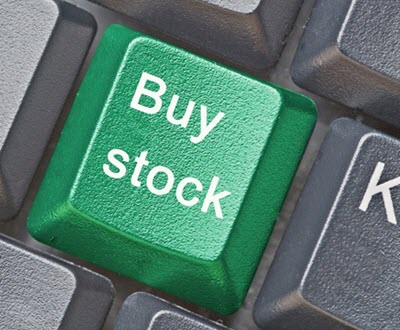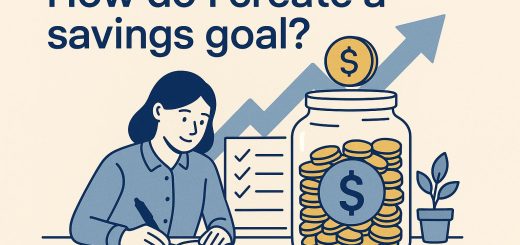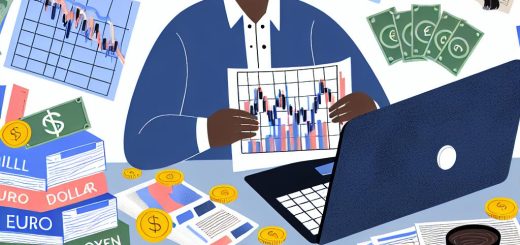Welcome to my website where I, Geoff Allen, tries to improve my economy and share my experiences. Here I will tell you what works and what doesn’t work. All information on this website is based on my experience. You might find that other techniques work better for you.
Saving money

It is easy to think that you are unable to save money. That you earn too little to save money. This is never true. Every one has unnecessary expenses that can be cut without negative effects on your life and without making your life more boring. In fact, you can often save money and improve your life at the same time. Common examples of this are to eat healthier and to stop smoking.
Common unnecessary expenses include:
- Subscriptions to magazines you do not read.
- Faster internet than you need
- An Internet connection that can be switched to another ISP.
- Cell phone contract that can be moved to another carrier
- Coffee at Starbucks
- Restaurant food
- Alcohol
- Food waste
And a lot of other things. Make a diary of all your expenses for a month. I am sure you can find costs that can be eliminated.
Credit Cards
Credit cards can easily trap you in a debt spiral, and you should only use a credit card when you know that you can pay the entire bill when it arrives. Do not use the credit unless you absolutely have to.
With this said. Many credit cards come with a lot of perks, and I recommend that you compare different credit cards to find one that suits you. Do not be afraid of hefty yearly fees. Many expensive credit cards offer perks that are worth many times the annual fee, and you can often earn money by paying for the cards instead of paying for the services.
Compare different cards and see which perks you can use and whether the card can save you money or not. Only get credit cards that save you more money than the yearly fee.
Stocks and Investing

The best way to build wealth is to invest your money so that it can work for you and earn even more money. Making your money work for you allow you to make more money than you would otherwise be able to since you get the income that you and your investments generate. If you invest enough money, you can stop working altogether and just let your money work for you.
It is always best to have a long term strategy when you invest in stocks. I prefer to invest in high yield dividend stocks. Stocks that pay men me money for owning them. I look for stocks with a long history, and my goal is never to sell a stock once I bought it. I avoid short term investments. I also try to reinvest the dividend in the same stock each year. This allows my money to grow even quicker.
A good dividend stock will increase in value every year and give you a higher dividend year after year.
Dividend stock is perfect if you invest for retirement. You do not need to sell them to get an income. You never have to worry about your investments running out if you are living off the dividends.
Real estate can also be a good investment but upkeep will cost you money each year, unlike dividend stock that pays you money each year. You can read more about real estate further down on the page.

Trading
Most traders fall into one of a few broad categories, shaped by time horizon, trading frequency, and the kind of analysis they prioritize. Understanding the strengths and limitations of each trading type is key if you’re aiming for consistent profitability over time and not just an adrenaline-filled but expensive hobby.
Below, we will first take a look at a few different trading styles; from extremely short-term day trading strategies to medium-long swing trading and longer-term position trading. We will also briefly touch on algorithmic trading, which has become incredibly popular in the 21st century. What used to be the privilege of a few huge institutional traders is now accessible even for retail traders using retail brokers and consumer-friendly software solutions.
Further down in this article, we will go through a few different markets that are available for speculation and investments – chiefly stocks, bonds, forex, commodities, and cryptocurrency – and we will also check in on a few common financial instruments utilized by traders wishing to gain exposure, including derivatives such as stock options, financial futures, and contracts for difference (CFDs).
Day Trading
For a day trader, positions are opened and closed within the same trading day, sometimes within minutes or even seconds, depending on which strategy that is employed and how the prices are moving.
It is called day trading since all positions are closed before the end of the trading day. A day trader does not leave any positions open over night.
Day trading tends to appeal to traders who thrive when things are intense, and how are willing an able to develop an intimate understanding of short-term volatility, liquidity and order flow. For day trading, you will need rapid execution, and day traders normally stick to very liquid markets.
Day trading can generate fast returns, but it can also destroy capital just as quickly. Each trading session requires deep focus and intense attention. It’s suited to those who thrive on pressure and enjoy reading momentum in real time. It’s less suited to those who need time to analyze things slowly or prefer to rely heavily on fundamental analysis.
One of the most popular type of day trading is FX day trading. Day trading on the forex market. You can learn more about this trading by visiting DayTrading.com.
Scalping
Scalping is a subset of day trading – it is one of several strategies that are suitable for day traders.
Scalping is short-term even by day trading standards, as it involves opening and closing positions within seconds or minutes to profit from very small price movements. Scalpers typically trade using special high frequency software, relying on speed, precision, and execution quality to make a profit.
This style demands fast decision-making and minimal hesitation. It requires advanced tools, direct market access, and often institutional-grade infrastructure. Most retail traders who try to scalp without the right setup find themselves consistently outpaced.
While scalping can be profitable under the right conditions, it’s not accessible to everyone. It suits traders who have access to low latency execution. For most retail traders, other day trading strategies offer a better balance between effort and reward.
A big plus with scalping is that scalpers can be profitable even when markets are stagnant, as they do not rely on any strong trends. Instead, the profit from small up and down movements within narrow ranges.

Swing Trading
Compared to day trading, swing trading is slower, and you will keep positions open over night. Swing trading sits between day trading and longer-term position trading, aiming to capture multi-day or multi-week price movements. A swing trader will typically keep positions open for a few days or weeks, but sometimes as long as few months – depending on their strategy and the circumstances.
Swing traders often use technical analysis, but compared to day traders, they are less less concerned with intra-day noise and more focused on short-term and medium-term trends, breakouts and continuation patterns.
Swing trading can be a good fit for you if you don’t want to sit in front of screens all day. Trades are often planned in advance using technical indicators, volume, and price action. Some swing traders combine this with light fundamentals—like earnings trends, sentiment or macro catalysts—but the timing is mostly driven by technical analysis. Your aim will be to profit from price swings, rather than try to spot the next big equity star and come in early as a buy-and-hold investor.
Swing trading rewards those who can wait through minor pullbacks without panicking and stay focused on the bigger pictures. It suits traders who want exposure without micromanagement, and who understand how to set risk limits and let a trade breathe.
Learn more by visiting SwingTrading.
Position Trading
Position trading takes an even longer view than swing trading, although there is often considerable overlap between swing traders and position traders when it comes to time-horizon. Position traders often hold positions for months or years, but are considered traders rather than buy-and-hold investors.
For a position trader, the aim is to capture larger price moves within broader trends—often based on fundamental shifts, economic cycles or macro-level signals. Technical analysis can still matter for timing, but the core of position trading is often built around a fundamental thesis. Position traders are less affected by short-term volatility and more focused on trend confirmation, sector rotation, and value cycles.
This style is closely aligned with investing but still follows trading principles—entries and exits are planned, risk is measured, and the position is reviewed as the narrative evolves. It’s a good match for those who trust their research process, have plenty of patience, and don’t want to be distracted by daily price movements. It also suits those trading around macro themes, where fundamental change drives price direction over longer windows.
News Trading (Event-Based Trading)
News trading involves reacting to—or anticipating—market-moving news. That could be earnings reports, economic data releases, central bank meetings, or geopolitical developments. Traders in this space move fast, often before the broader market reacts.
The potential rewards are high, but so are the risk. News can cause spreads to widen, slippage to increase, and volatility to spike unpredictably. Timing matters, but so does preparation. News traders often pre-position based on expected outcomes or wait to confirm direction before jumping in.
This type of trading is often layered on top of other styles. A swing trader might avoid trading ahead of a major news release. A day trader might look for sharp moves after the release of U.S. nonfarm payrolls data. In all cases, success depends on understanding how news flows through the market—and how liquidity behaves when everyone is reacting at once.
Algorithmic Trading (Algo Trading) – Trading Using Pre-Programmed Trading Robots
Algorithmic trading is less about screen time and more about code. It involves using predefined rules and logic to enter and exit trades, often based on statistical edges, backtested patterns, or arbitrage opportunities. It’s most commonly associated with institutions, but has become increasingly accessible to other traders as well, including fairly small hobby traders.
Algorithmic trading involves pre-programming a special type of trading software – a so called trading robot. The robot can then scan vast amounts of price data, 24/7, looking for conditions that fit the pre-set criteria. The software works on its own and will open and close positions, in accordance with the parameters, without your involvement.
Of course, a trading robot is no better than the rules it has been programmed to follow, so it is not an effortless money making machine. Also, it does not eliminate risk.
Different Markets and Instruments
Once you get past the surface of trading, you start to realize that it’s not just about “buy low, sell high.” It’s about understanding what you’re actually buying or selling. Every market and financial instrument behaves differently, carries its own risk, and fits into different strategies depending on how you trade and what you’re trying to achieve.
Some instruments are straightforward, while others are built with leverage, expiration dates, and exposure layers that demand more attention. Knowing how each instrument behaves under pressure—how it moves, how it reacts to news, how it responds to volume, and how risk must be managed—can be the difference between staying in the game and getting blindsided by something you didn’t fully understand.
Stocks
When you buy a stock, you’re buying a share in a company. It’s direct, simple, and the starting point for many traders and investors. Stocks can be traded on exchanges during market hours, and prices move based on demand and supply, which in turn is impacted by factors such as company performance, earnings reports, macroeconomic news, market psychology, and speculation.
Stocks are used for a variety of different strategies. You can swing trade them, day trade them, or hold them long-term. Some pay dividends, others don’t. Some follow the broader index, others move in the opposite direction entirely. Stock prices can be influenced by both sector-specific news and overall market sentiment, and that makes them reactive—but also readable, once you learn how they move.
Among traders, it is common to sort stocks into different groups to denote how they fit into a portfolio and what can be expected in terms of risk-reward. Examples of commonly used labels are growth stock, blue-chip stock, dividend-paying stock, value stock, penny stock, defensive stock, and cyclical stock. A stock can belong to more than one category simultaneously, and it is for instance not uncommon for a blue-chip stock to also be a dividend stock. Learning a bit more about these different labels can make it easier for you to find the right stocks for your stock portfolio or trading strategy, and avoid the ones that do not mesh well with your needs.
What are growth stocks?
Growth stocks are stocks that we expect will rise significantly in value. They can for instance belong to a new exiting tech company, and we buy them for their potential rather than today´s balance sheet. A growth stock company is typically a company that is expanding fast and scaling their business. Do not expect dividends, because any profits (if the company is even profitable) will be reinvested into growth and development. Growth stocks are popular among traders, because the swings can be powerful. They are also popular among longer-term investors who believe in the company and is willing to ride out the bumps. After all, everyone wish they had bought stocks in Apple early on, right? They are not suitable when you want to add something to your portfolio that will reduce the overall risk level.
What are blue-chip stocks?
This is the opposite of growth stock. While blue-chip stock can absolutely be expected to increase in value over time, you are not getting in on the ground floor. Blue-chip companies are well-established, very large and stable companies that are known for weathering out the storms well. They have survived many business cycles and they are leaders in their respective industries. Some of them are older than you are, especially if you look beyond the mergers and rebranding efforts. Think Coca-Cola, Procter & Gambler, JPMorganChase, and Chevron. Blue-chip stocks are commonly used to add stability to a stock portfolio. If you do not want to invest in individual companies, you can invest in funds that in turn invest in blue-chip stock. Both classic mutual funds and exchange-traded funds (ETFs) are available.
What are value stocks?
When we talk about value stocks, we do not mean stocks that have a particularly high price. Instead, the term value stock is derived from the idea of value investing, e.g. actively looking for stock companies that you believe are undervalued right now. Value investors will typically carry out deep fundamental analysis of a company before buying, and they will only buy if they come to the conclusion that the market is currently undervaluing the stock, e.g. because the company is going through a bit of a rough patch that it is well equipped to move through. Value investing is especially popular among long-term investors, but you can also find position traders and some swing traders looking for undervalued companies that they believe will turn things around soon.
What are defensive stocks?
When the economy is about to take a turn for the worse, it can be beneficial to stock up on defensive stocks. Defensive stocks are shares of companies that we expect to do comparatively well even during difficult economic times, e.g. because they are producing and selling products that consumers will prioritize, such as basic groceries, hygiene products, and utilities. Defensive stocks are sometimes added to the portfolio alongside governmental bonds and exposure to the gold price when investors believe depressing times are around the corner.
What are cyclical stocks?
Cyclical stocks follow the ups and downs of the economy. When the economy is doing well, you can expect the stock price to go up. When the economy is doing poorly, so does the stock price. Companies in the travel and experience industry are often cyclical, since people spend more on travel and leisure when they have more money in their pocket – and cut back quickly when times become more difficult. For cyclical stocks, timing is important. Traders tend to make their money swing trading as the stocks are trending up or down, while investors try to buy cyclical stocks towards the end of an economic depression or during the early stage of an economic upturn, and then watch the stock rise.
What are penny stocks?
Penny stocks are low-prices stocks, that also tend to be low-volume and highly volatile. Novice traders and investors are often attracted to penny stocks as you do not have to pay a lot per share, but this is actually a comparatively high-risk stock category and we recommend inexperienced traders and investors to stay away from them.When a stock is low-price and low-volume, it doesn´t take a lot of money to have a noticeable impact on the stock price. This makes penny stock volatile, and they are also a popular target for pump-and-dump frauds. If you are interested in penny stocks, make sure you read about pump-and-dump schemes first, to make sure you know how to spot the warning signals.
What are dividend stocks?
Dividend stocks are shares in a company with a solid track record of paying dividends. A profitalbe company can decide to use some of its profits to pay the shareholders – and this is called a dividend payment. The dividends are paid out per share, so someone owning 100 shares gets twice as much money as someone owning 50 shares. Dividend-paying stocks can give you a stream of income, which means you can profit from owning the stocks without having to sell them off to realize the type of profit that comes from rising stock prices. They are more popular among investors than traders.
Bonds
Bonds are debt instruments. When you buy a bond, you’re effectively lending money to a government, corporation, or municipality in exchange for regular interest payments over time. A bond has a specific lifetime, and when it expires, the bond owner gets the principal (original purchase price) back. In essence, the borrower pays back the loan to whomever happens to be owning the bond when it expires.
Bonds are traditionally seen as safer than stocks, but in practice, bond markets can be complex, especially when you trade them rather than just hold them. How safe a bond is (and how safe it is perceived to be) will depend on the creditworthiness of the issuer. A stable nation like the United Kingdom can issue bonds that are considered extremely safe and will attract buyers even when the interest payments the bonds pay are low. A struggling and unstable nation, or a corporation with a less than stellar credit rating, will need to offer a considerably higher interest rate to attract any lenders (bond buyers).
Bond prices tend to move inversely to central bank interest rates. When rates rise, bond prices fall, and vice versa. This dynamic makes them especially sensitive to central bank policy and inflation expectations. Traders who work in the bond space often focus on yields, spreads between different maturities, and the shape of the yield curve. Trading bonds means thinking in terms of duration, credit risk, and monetary policy. It’s a slower market, but no less important—especially during periods of volatility or when interest rates are shifting rapidly.
Commodities
A wide range of commodities are traded on the global market and it is possible to speculate on their market prices.
Examples of hard commodities:
- Natural gas
- Brent crude oil
- West Texas Intermediate crude oil
- Oman crude oil
- Precious metals, such as gold, silver and platinum
- Non-precious metals, such as copper and nickel
Examples of soft commodities:
- Coffee
- Cocoa
- Sugar
- Corn
- Wheat
- Soybean
- Rice
- Cotton
Commodities sit at the heart of the global economy, and everything from inflation to geopolitics can touch the price of commodities in some way. Commodities are often deeply influenced by seasonality, supply chain disruption, global policy, and risk sentiment. Oil responds to OPEC meetings. Gold reacts to real yields and USD strength. Agricultural commodities move on weather reports and global harvest projections.
Trading commodities doesn’t mean you’re taking delivery of barrels or bushels. You’re usually trading futures contracts or spot price derivatives, depending on the platform. These instruments track the price of the underlying asset, but come with their own rules, including contract expiry dates, rollover procedures, and potentially massive spikes around supply data releases.
Commodity futures are not only used by financial traders looking to profit from short-term speculation; they are also very important for the people and companies that are involved in the actual growing, mining and use of the commodities. A farmer growing cocoa beans can for instance use futures to lock-in the price of their harvest in advance, and a company producing chocolate bars can use futures to make sure they are not suddenly hit by a huge and sudden coca bean price spike due to bad weather in Côte d’Ivoire.
For traders who want macro exposure or protection against inflation, commodities provide a way to bet on—or hedge against—global conditions. But they demand context. Without it, moves can feel random or exaggerated.
Forex (Foreign Currency)
Currency trading doesn’t involve owning anything physical—it’s the buying of one currency and paying with another. It’s a relative value trade, with exchange-rates driven by macroeconomic shifts, rate policy, and capital flows.
The global forex market is enormous – it is the largest of all the financial markets by a wide margin. Trillions move through it daily, and it’s open 24 hours a day, five days a week. This makes it the most liquid financial market in the world, but it is also one of the most leveraged. Small price moves are amplified, and things can get stormy quickly.
Unlike equities, forex isn’t about earnings reports or balance sheets. It’s much more heavily influenced by factors such as global events, central bank decisions, domestic data releases, interest rate expectations, and sudden geopolitical shocks. That makes it fast-moving and headline-sensitive. For traders who thrive in high-speed environments, forex offers unmatched liquidity and 24/5 trading opportunities.
The foundation of the forex market are the currency pairs. Each time you purchase a currency, you have to pay using another currency.
These are the most heavily traded currency pairs:
- EUR/USD (Euro/US Dollar)
- USD/JPY (US Dollar/Japanese Yen)
- GBP/USD (British Pound/US Dollar)
- USD/CHF (US Dollar/Swiss Franc)
- AUD/USD (Australian Dollar/US Dollar)
- USD/CAD (US Dollar/Canadian Dollar)
- NZD/USD (New Zealand Dollar/US Dollar)
Cryptocurrency
Cryptocurrency is a newer market compared to the others, but it’s earned its place in the trading world. It offers high volatility, 24/7 trading, and a mix of macro speculation, tech innovation, and retail hype.
Bitcoin, Ethereum and other large-cap tokens dominate volume, but the broader cryptocurrency market includes thousands of smaller coins. Each comes with its own risk profile, project roadmap and liquidity issues.
Unlike traditional assets, cryptocurrencies often trades more on sentiment and momentum than fundamentals. There’s no central bank, and price movements are often driven by adoption headlines, regulatory shifts, and digital asset flow. For traders who understand volatility, cryptocurrency offers real movement and huge potential, but this not a space to enter without full awareness of liquidity, security and counterparty risk.
The largest cryptocurrencies by market capitalization (April 2025):
- BTC (Bitcoin)
- ETH (Ether, used at the Ethereum network)
- USDT (Tether)
- XRP
- BNB
- SOL (used at the Solana network)
- USDC
- TRX (used at the TRON network)
- DOGE (Dogecoin)
- ADA (used at the Cardano network)
As a cryptocurrency trader, you can trade both crypto-crypto pairs (e.g. BTC/ETH) and crypto-fiat paris (e.g. BTC/USD).
If you do not want to actually buy, own and sell cryptocurrency, there are other ways to gain exposure. Some traders do not wish to use cryptocurrency exchanges (e.g. due to legal reasons or security reasons) and will instead stick with a classic broker and use other instruments to gain exposure to cryptocurrency exchange rates. You can for instance use Contracts for Difference (CFDs) to speculate on price movements, or buy shares in an exchange-traded fund (ETF) that holds a cryptocurrency or a basket of cryptocurrencies.
Derivatives
Derivatives are financial instruments whose value comes from another asset. That could be a stock, index, commodity, currency, or even another derivative. Common derivatives include futures, options, swaps and CFD trading .
Trading derivatives means you’re not trading the underlying asset—you’re trading a contract whose value is based on how the underlying asset behaves. That opens up flexibility. You can go long or short, hedge risk, or build complex multi-leg strategies. But it also introduces more complexity, and you need to stay on top of factors such as time decay, margin requirements, and sometimes, significant leverage.
Options traders, for example, are constantly managing variables like volatility, time value, and strike price movement. Futures traders are watching contract expiry dates, rollover impacts, and spread movement. Derivatives offer massive flexibility, but also demand structure, detailed risk control, and a clear understanding of the instrument’s behavior.
Indices
A financial index produces a numeric score based on inputs, usually a variety of asset prices. It is used to track the performance of a group of assets in a standardized way.
One well known example are the many stock indices that track a basket of stocks, e.g. the FTSE100 index and the S&P 500. You can also find commodity indices, currency indices, and more.
Speculating on an index means speculating on the performance of the index constituents, e.g. the performance of the 100 large stock companies on the London Stock Exchange that are included in the FTSE 100 index. Indices tend to be smoother in movement than individual prices, but still capable of sharp moves, especially during earnings seasons, interest rate decisions, or major geopolitical events.
Stock index speculation appeals to those who want momentum without micro-level noise. It’s less sensitive to single-company news and more influenced by economic data, central bank signals, and market-wide risk sentiment.
There are many ways to get exposure to an index, and you can for instance used Contracts for Difference (CFDs), futures contracts, or index-tracking Exchange-Traded Funds (ETFs).
Examples of well-known stock indices:
- FTSE 100
- S&P 500
- DIJA
- DAX
- Nikkei
- Nifty 50
- EURO STOXX 50
- Euronext 100
- NASDAQ Biotechnology Index
- MSCI World
- STOXX Global ESG Leaders Index
- What is the FTSE 100? The Financial Times Stock Exchange 100 Index (FTSE 100) index tracks the 100 most highly capitalized blue-chip stock companies listed on the London Stock Exchange (LSE). It is informally known as “Footsie” and is often seen as a reflection of how the British economy is going.
- What is the S&P 500? The Standard and Poor’s 500 (S&P 500) tracks 500 huge companies listed on stock exchanges in the United States, and it is considered a benchmark index for the U.S. stock market. As of late March 2025, the aggregate market cap of the constituents was nearly 50 trillion USD, which amounted to approximately 80% of the total market capitalization of U.S. public companies
- What is the Dow Jones Industrial Average (DJIA)? This stock index tracks the performance of 30 stocks traded in the United States. All the 30 constituents are well-established large-cap companies. Established in 1896, it is one of the oldest extant stock indices in the United States. It is named after its founder Charles Dow, the co-founder of The Wall Street Journal, and his business associate, the statistician Edward Jones. The DJIA is a price-weighted index, which sets it apart from indices such as the S&P 500 and Nasdaq Composite use market capitalization.
- What is DAX? DAX tracks 40 of the top stocks traded on the Frankfurt Stock Exchange (in Germany). It is to the German economy what the DJIA is to the United States economy.(DAX was historically comprised of 30 companies but was expanded to 40 in 2021. ) Unlike most other country indices, DAX takes dividends into account.
- What is the EURO STOXX 50? The EURO STOXX 50 tracks 50 of the Eurozone´s blue-chip companies; companies that have the largest and most liquid stocks. All the companies are considered leaders in their respective sectors, and the Euro Stoxx 50 constituents are picked from the 19 Euro Stoxx Regional SuperSector indices. Data from September 2023 show 23 French companies, 14 German companies, 7 Dutch companies, 4 Italian companies, 4 Spanish companies, 2 Finnish companies, 1 Belgian company, and 1 Irish company. The Euro Stoxx 50 was introduced in early 1998, but its prices were calculated retroactively back to the year 1986. Today, this index captures about 60% of the free-float market capitalization of the Euro Stoxx Total Market Index (TMI), which in turn captures circa 95% of the free-float market capitalization of the represented countries.
Exchange-Traded Funds (ETF)
An exchange-traded fund (ETF) is a fund where the fund shares are listed on an exchange and traded similar to stocks. For a classic mutual fund, shares are normally only bought and sold once a day. For an ETF, trading takes place throughout the trading day. The ETF is therefore more suitable for traders who want this flexibility, including day traders.
The exchange-traded fund is a much younger invention than the classic mutual fund, and was not launched until the early 1990s. Today, the concept is extremely popular, and a wide range of ETFs are available, providing exposure to different asset types, industries, niches, regional markets, and indices.
Just like a mutual fund, an ETF can give you a high degree of diversification from day one. It can be a great solution for a trader or investor who is starting out with a small amount of money and would struggle to achieve proper diversification through individual stock/asset picks.
For longer-term investments, e.g. for retirement accounts, index-tracking ETFs that are passively managed and come with really low management fees have become very popular. Each penny you pay in fees is a penny you can not invest, and it can make a big difference over time. For many investors, going with an actively managed fund that attempts to outpace the market is simply not worth it, when we consider risk, management-fees, and time-horizon. By late 2023, ETFs made up roughly 30% of total U.S. fund assets.
Real estate
One of the most compelling advantages of real estate is its resistance to inflation. As the cost of living rises, so does the value of property, making it a protective hedge against inflationary pressures. Moreover, real estate provides a passive income stream through rental yields. In many urban locales, rental demand remains high, ensuring consistent returns for property owners.

Tax benefits are another boon for real estate investors. Various jurisdictions offer tax deductions on mortgage interest, property taxes, and even some costs associated with buying or managing the property. This can significantly optimize an investor’s financial strategy.
Furthermore, real estate offers diversification for one’s investment portfolio. Owning property can balance the volatility seen in stock markets, providing an element of safety during turbulent economic times.
Avoid Getting Scammed
There are a lot of scams in the world of finance. There are a lot of services that claim that they can help you trade. They are all scams. Anyone good enough to make a lot of money will not waste his or her time selling the tips. They would make more money focusing on their trading.
There are also financial instruments that are designed for you to lose money. An excellent example of this is binary options. You can make money trading binary options, but they are designed for you to lose money. You need to be very skilled to overcome this.
Avoid anything that seems too good to be true.
This article was last updated on: August 17, 2025




